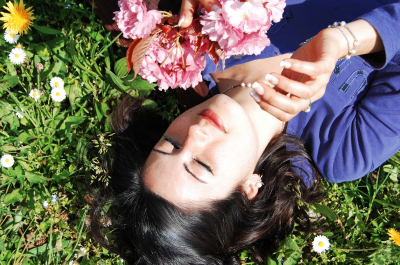It’s Allergy Season

Spring has sprung and that means so has allergy season. About 35 million Americans experience the ill effects of occasional allergies; pollen is the greatest spring allergy trigger in most people.
Pollen is made up of small grains that are discharged into the air by trees, grasses, and weeds, with a specific end goal to pollinate different plants. At the point when pollen gets into the nose of somebody with allergies, it triggers their symptoms. The pollen grains appear as though they are intruders to the body, which discharges antibodies to assault them. Once the antibodies are fighting back against the allergens, histamines are discharged into the blood and this triggers regular side effects. Nothing has been discovered that will eliminate pollen from getting into the body, however, luckily, there are approaches that may help once side effects are felt.
Therapeutic Treatment:A specialist can propose both prescription and over-the-counter medicine. For some individuals, over-the-counter cures work fine and dandy. Antihistamines can help bring down the levels of histamine in the body to lessen wheezing, sneezing, and tingling. Decongestants can clear out the nasal paths and decrease swelling. For some individuals, nasal sprays work speedier than decongestants to clear nasal entries. There is even a nasal spray that can help block the arrival of new histamines into the body. Also, the utilization of eye drops during symptoms helps to calm bothersome, watery eyes. In the event that over-the-counter prescription isn’t living up to expectations, a specialist can help with next steps; for example, prescribe prescription drug or anaphylaxis shots.
Natural Therapies:There are many natural cures that may help relieve symptoms. According to a Swiss study indicated that the herb butterbur, a European bush, is a common antihistamine. Quercetin, a flavonoid found in onions, pieces of fruit, and dark tea has incendiary properties and has likewise been indicated to block histamines. Needle therapy is an alternate non-medicinal treatment that gives individuals enduring help from allergen side effects. Remember, “natural” does not always mean safe so it’s always best to check with a specialist first.
Family Habits:There are likewise many safety measures that individuals can take in their everyday lives to help them maintain distance from allergen triggers. Pollen can travel for miles and the higher the pollen release; the more a susceptible person may suffer. Many weather apps now show pollen counts in your area. Check the day by day pollen numbers before going out to be sure you’re prepared.
Attempt to stay inside in the mornings, when pollen numbers frequently top out. Remember to keep entryways and windows shut as much as possible in the spring to keep the pollen out. If conditions become too severe in the home it may be worth the cost to install an air purifier. Keep all home air ducts clean, tidy all bookshelves, vents, and different spots where dust and pollen may gather. Finally, vacuum at least twice a week to gather any pollen trapped in the floor coverings. Keep mind that while vacuuming and cleaning, it is smart to wear a mask so none of the dust and pollen that gets kicked up will be breathed in.
Avoiding pollen and dust completely is not realistic, especially during certain seasons of the year. Learning to avoid areas and days when the pollen is at its peak is the best route to stay clear and uncongested. Also, consulting your doctor on the best treatment when symptoms do occur will help you stay prepared and feeling your best.
FREE BROCHURE Today!
